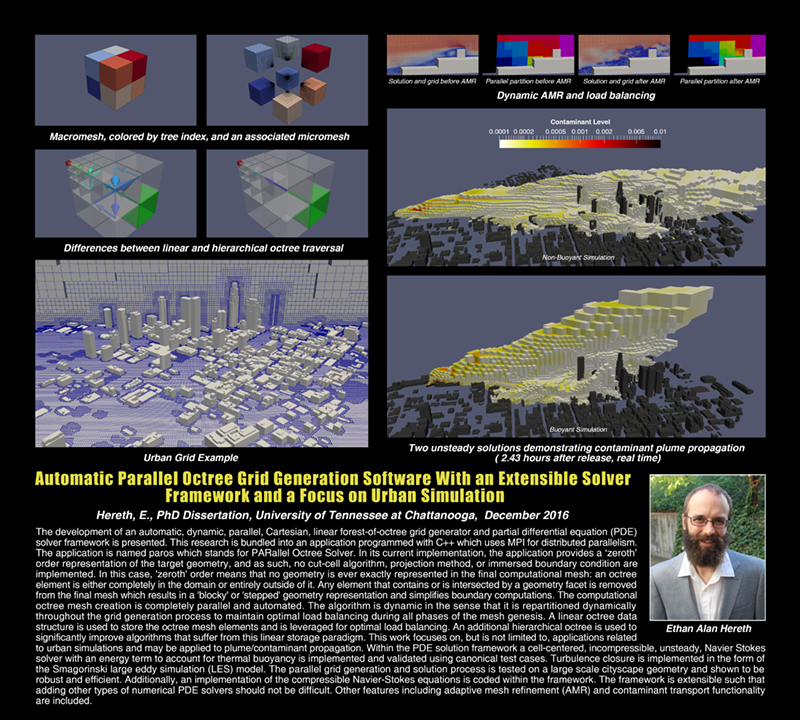Ethan Hereth
Automatic Parallel Octree Grid Generation Software With an Extensible Solver Framework and a Focus on Urban Simulation
A Dissertation Presented for the Doctor of Philosophy in Computational Engineering, The University of Tennessee at Chattanooga
Ethan Hereth, December 2016
Abstract:
The development of an automatic, dynamic, parallel, Cartesian, linear forest-of-octree grid generator and partial differential equation (PDE) solver framework is presented. This research is bundled into an application programmed with C++ which uses MPI for distributed parallelism. The application is named paros which stands for PARallel Octree Solver. In its current implementation, the application provides a 'zeroth' order representation of the target geometry, and as such, no cut-cell algorithm, projection method, or immersed boundary condition are implemented. In this case, 'zeroth' order means that no geometry is ever exactly represented in the final computational mesh: an octree element is either completely in the domain or entirely outside of it. Any element that contains or is intersected by a geometry facet is removed from the final mesh which results in a 'blocky' or 'stepped' geometry representation and simplifies boundary computations. The computational octree mesh creation is completely parallel and automated. The algorithm is dynamic in the sense that it is repartitioned dynamically throughout the grid generation process to maintain optimal load balancing during all phases of the mesh genesis. A linear octree data structure is used to store the octree mesh elements and is leveraged for optimal load balancing. An additional hierarchical octree is used to significantly improve algorithms that suffer from this linear storage paradigm. This work focuses on, but is not limited to, applications related to urban simulations and may be applied to plume/contaminant propagation. Within the PDE solution framework a cell-centered, incompressible, unsteady, Navier Stokes solver with an energy term to account for thermal buoyancy is implemented and validated using canonical test cases. Turbulence closure is implemented in the form of the Smagorinski large eddy simulation (LES) model. The parallel grid generation and solution process is tested on a large scale cityscape geometry and shown to be robust and efficient. Additionally, an implementation of the compressible Navier-Stokes equations is coded within the framework. The framework is extensible such that adding other types of numerical PDE solvers should not be difficult. Other features including adaptive mesh refinement (AMR) and contaminant transport functionality are included.
Click here to access a copy of Ethan's dissertation.
